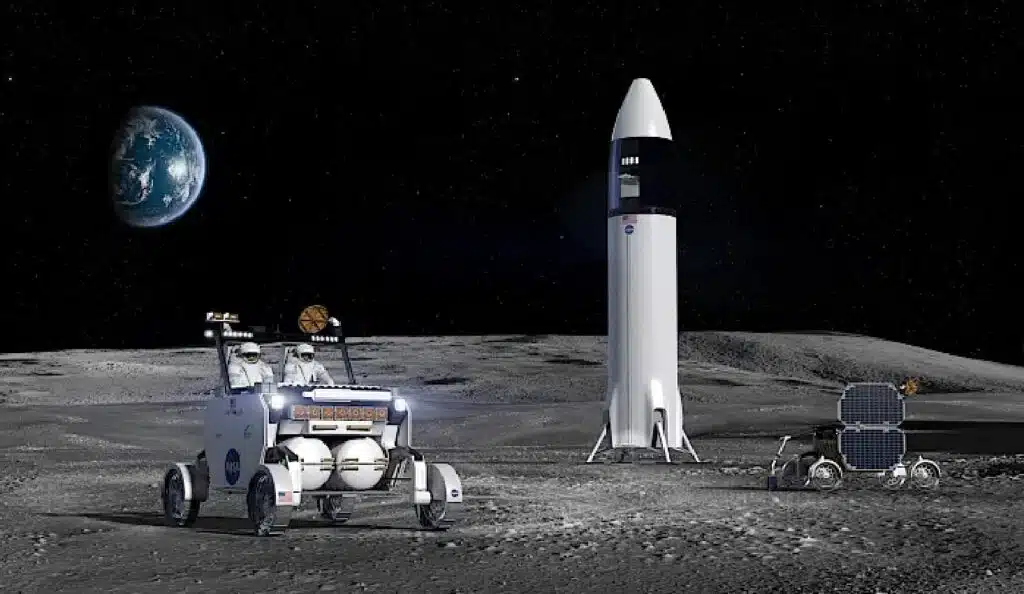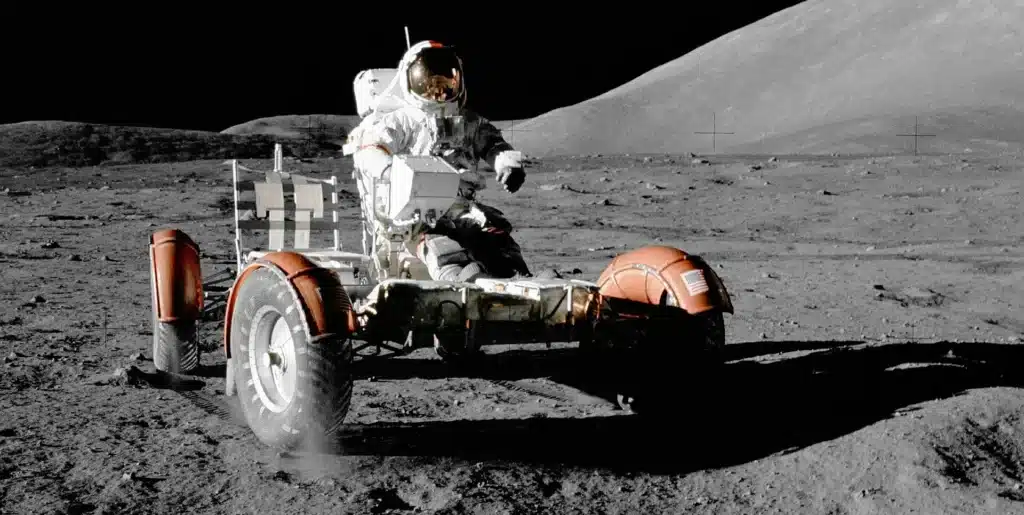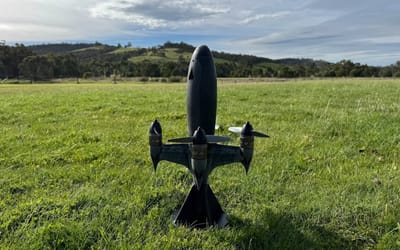First NASA crew-driven lunar rover in 50 years gets major tech upgrade ahead of Artemis V mission
Published on Jul 19, 2025 at 1:00 PM (UTC+4)
by Keelin McNamara
Last updated on Jul 15, 2025 at 4:30 PM (UTC+4)
Edited by
Emma Matthews
NASA is preparing the first crew-driven lunar rover, known as an LTV, in over 50 years in advance of Artemis V.
The Artemis Moon exploration program is getting close to launching a new mission to the lunar surface.
Next year will see Artemis II launch a crew of four around the Moon.
But NASA is already planning for Artemis V in 2030 – and it is bringing a lunar rover with it.
DISCOVER SBX CARS: The global premium car auction platform powered by Supercar Blondie
NASA plans first crew-driven lunar rover in over 50 years
NASA is constantly looking for ways to explore regions of our solar system.
America’s space agency is in the process of planning several Artemis missions to explore the Moon.
Artemis II, launching next year, and Artemis III in 2026 will take a crew of four around the Moon, while Artemis IV in 2028 will also deliver materials to the new Moon-orbiting space station.
The Astronauts involved in those missions will not have a mode of transport on the surface itself.
However, those involved in Artemis V, scheduled for 2030, will have exactly that at their disposal.
NASA plans to use a crew-driven lunar rover called the ‘Lunar Terrain Vehicle’ or LTV.

The project is already so advanced that three companies are working on competing designs.
NASA is currently considering designs from Intuitive Machines, Lunar Outpost, and Venturi Astrolab.
A decision on which design NASA will actually use is expected to be made later this year.
Irrespective of which design is chosen, the LTV will make history.
And that is because it will be the first crew-driven lunar rover on the Moon in over 50 years.
Artemis V Moon mission will have a lot of equipment
Whichever design is chosen will also be fitted with several pieces of high-tech equipment.
The first piece is something called the Artemis Infrared Reflectance and Emission Spectrometer, or AIRES.
AIRES has been developed by Arizona State University in Tempe with one goal in mind.
Its goal is to ‘identify, quantify, and map lunar minerals and volatiles’ across the lunar south pole.
The University of Hawaii at Manoa plans to send the Lunar Microwave Active-Passive Spectrometer, or L-MAPS.
The aim of L-MAPS is to determine what is below the surface of the Moon.
It hopes to use a spectrometer and a ground-penetrating radar to find ice under the surface.
Both of these tools will be attached to the LTV itself.

A third piece of equipment, however, will support the Artemis V mission from orbit.
The Ultra-Compact Imaging Spectrometer for the Moon, or UCIS-Moon, is that third piece.
Having been developed by NASA in California, the aim of the UCIS-Moon is simple.
It’s there to provide geological mapping, as well as to give the crew a better idea of where best to collect samples.
NASA believes that all three instruments will combine to give a much better picture of the possibilities for future exploration.
Keelin McNamara is a content writer at Supercar Blondie from Ireland, covering cars, technology, and lifestyle. Despite being a Law graduate, he discovered his passion for journalism during the COVID-19 pandemic, and has worked in the industry ever since. Outside of work, he is an avid MotoGP fan, and is a self-confessed addict of the sport.




